The Best Competitor Analysis Tools in 2025

I hope you enjoy this blog post. If you want Hello Bar to grow your leads, click here.
Author:
Mansi
Published
September 23, 2025

Table of Contents
If you run marketing for a small team, you don’t have hours to waste. You need clear answers: Which tools are worth paying for? Which ones can you skip? And how do you get useful insight without turning your week into a research project? That’s the point of this guide. It pulls together the best competitor analysis tools across price points, with notes on where they shine, where they fall short, and how to put them to work right away.
Two quick promises before diving in. First, this isn’t a pitch. No one’s trying to sell you a bundle you don’t need. Second, the advice stays grounded—settings, clicks, sample workflows—so you can try things the same day. If you’re here for a practical run-through of the best competitor analysis tools, you’re in the right place.
How to choose without second-guessing yourself
You can get lost comparing feature pages. Don’t. Start with a simple scorecard:
- What decision will the data change in the next 30 days? (channel to prioritize, content to publish, keywords to pursue, ads to test)
- Which teammates will actually use the tool each week?
- Do you need domain-level views, page-level details, or both?
- What’s the minimum contract you’re okay with? Month-to-month beats annual if you’re still testing.
- What’s the “time to first insight”—can you get a useful answer in under an hour?
If a tool can’t clear those five checks, move on. There are plenty of competitor analysis tools that will.
How these tools were tested
Each product was run against the same short brief: find three ranking gaps, two link targets, one ad tactic, and one social angle for a real brand. The review looked at data freshness, setup friction, report quality, export options, and how quickly action could follow. This isn’t laboratory testing; it’s how busy teams actually work. Use these notes to match the competitor analysis tools to your plan. Let’s take a look at these tools.
1) Semrush: all-channel research when one login is better
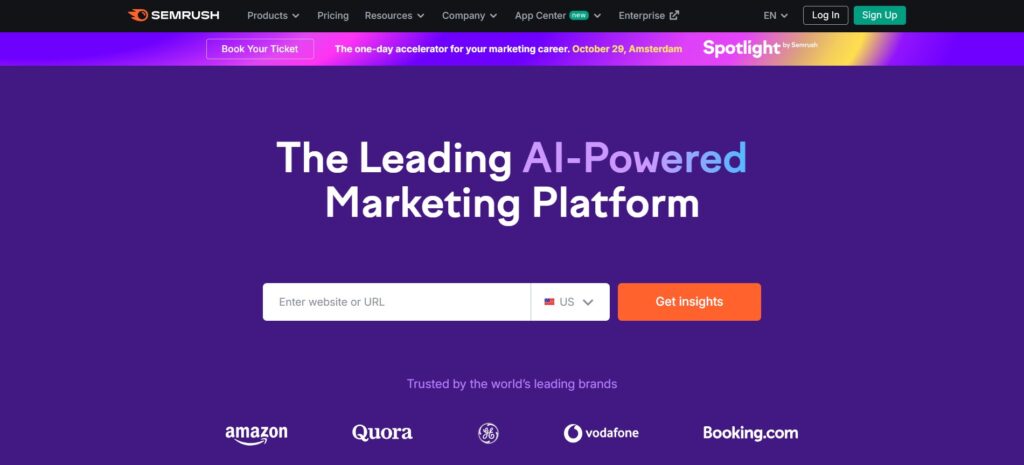
Where it helps: domain and page-level SEO, paid search intel, content gap analysis, quick site audit.
Where it can feel heavy: the first setup can be noisy if too many projects are tracked at once.
Semrush is the tool to open when a stakeholder asks a big question like “Why is Competitor X everywhere?” Enter a domain and you get organic keywords, positions, traffic estimates, featured snippet wins, paid terms, ad copy examples, and competitor clusters. The Keyword Gap and Backlink Gap reports are straightforward: pick your site plus two or three others and find the holes. Tie it to a Rank Tracker to know if the changes you ship next week actually move.
Semrush pairs well with a lighter, task-first workflow. Pull a report, export the exact list of target terms, map them to pages, assign owners, and move on. If a full audit is overdue, the on-page checks give fast wins you can ship in a sprint. For many teams it sits near the top of any list of the best competitor analysis tools.
2) Ahrefs: backlink reality check and clean explorers
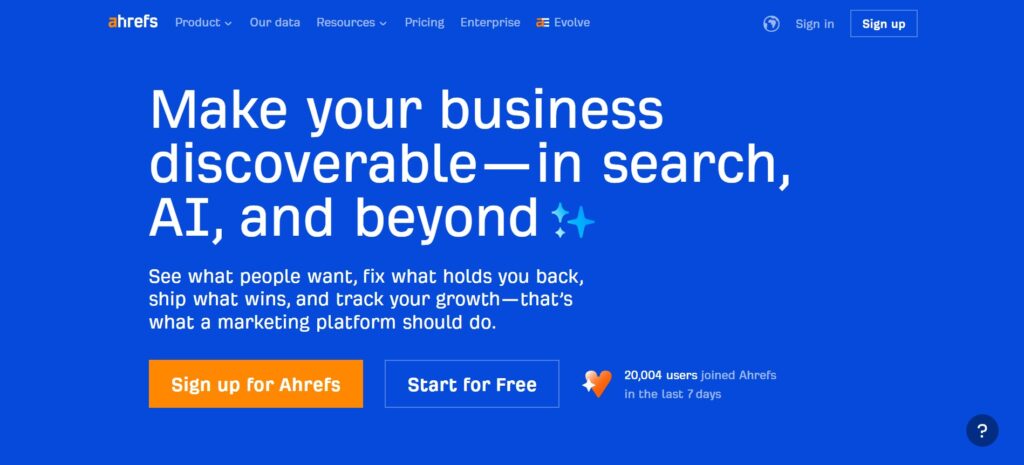
Where it helps: link building, competitive content research, historical trend lines.
Where it can feel heavy: price for smaller teams that only need a few reports per month.
Ahrefs brings a deep link index and fast explorers. Site Explorer shows the pages and terms driving the most value for a competitor. Content Explorer is handy for finding proven angles in a niche, not just keywords. The Top Pages and Best by Links reports surface realistic outreach targets—pages that already attract links in your space. If the question is “Who is linking to rivals and why?”, Ahrefs answers fast.
If Semrush is already in place, there’s no need to double up unless links are central to the plan. If links matter a lot, pair the two: Semrush for planning and Ahrefs for execution. That’s often the most practical combo among the best competitor analysis tools.
3) LowFruits: quick wins for small budgets
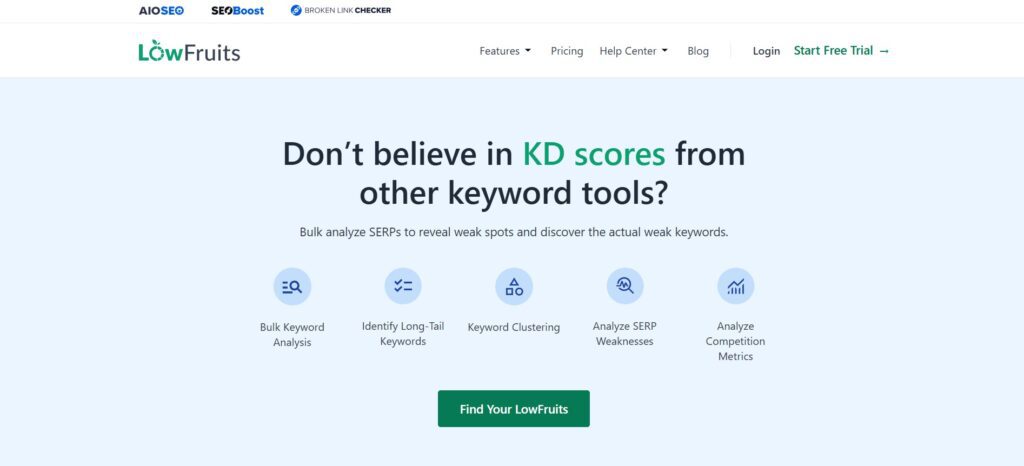
Where it helps: finding low-competition terms bigger rivals ignored.
Where it can feel heavy: limited beyond keyword hunting.
LowFruits is honest about what it does: spot winnable keywords by looking for weak results. Feed it a topic list and it flags phrases where the SERP shows small sites or thin pages. For new sections or long-tail content, it’s a time saver. Export, draft, publish, track. Used with care, it builds a steady cadence of pages that rank without a huge link push. For scrappy competitor analysis tools that make a difference, this stays on the shortlist.
4) Similarweb: traffic and audience at the domain level
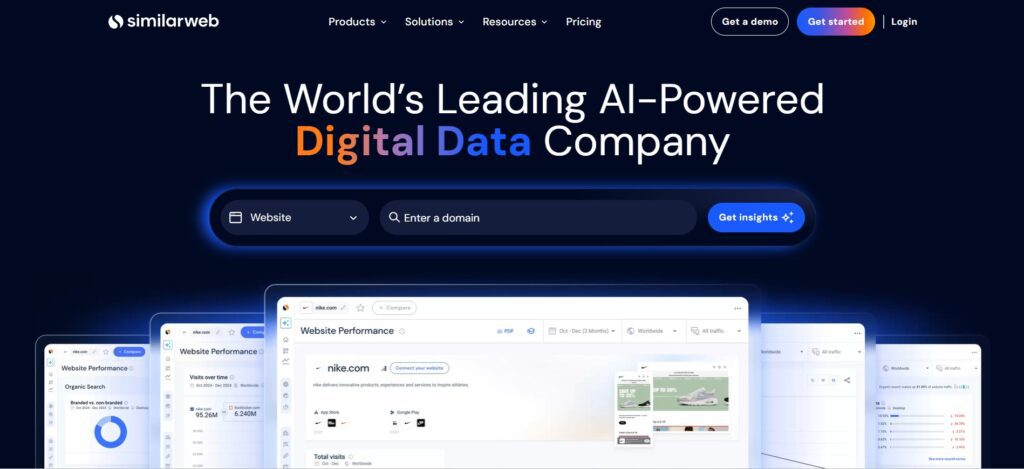
Where it helps: top pages by share of traffic, referrals, geography, and paid/organic mix.
Where it can feel heavy: no granular page-level SEO like in Ahrefs or Semrush.
When the big picture of a competitor’s demand is needed, Similarweb is useful. Expect traffic by channel, which pages carry most visits, and which referrals matter. It’s helpful for sizing a market, planning partnerships, or sanity-checking a board slide. For content teams it’s more of a guide rail than a daily driver. Treat it as a compass alongside deeper competitor analysis tools for page-level work.
5) iSpionage: practical PPC peeking
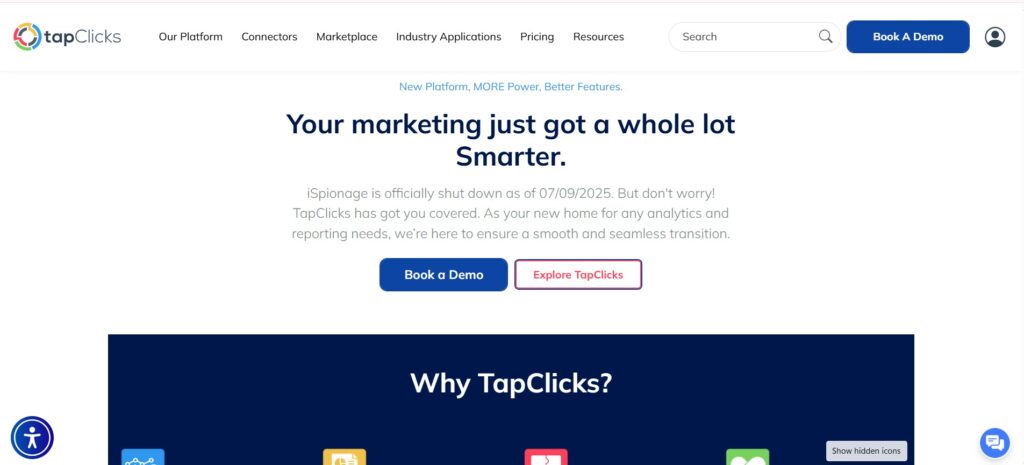
Where it helps: paid keywords, ad copy history, landing page screenshots.
Where it can feel heavy: limited outside paid search and a bit US-centric in some niches.
Use iSpionage when a look at the ads rivals actually run would help. Expect terms, sample copy, and how often a domain shows. Pair that with your own analytics to spot gaps worth testing. With tight paid budgets, this saves time by pointing to targets others already find worthwhile. It’s one of those competitor analysis tools that pays for itself if it prevents a few bad tests.
6) SpyFu: simple SEO and PPC overlap (good for quick digs)

Where it helps: scraping the top keywords and ads a domain buys or ranks for.
Where it can feel heavy: data depth isn’t as strong as the priciest options.
SpyFu quickly reveals overlap between paid and organic. That overlap is where intent is proven. Pull a domain, grab the shared terms, and build a plan that squeezes both channels. For a fast audit for a client or partner, it’s a handy starting point among competitor analysis tools you can learn in an hour.
7) Serpstat: a balanced all-in-one with friendly pricing
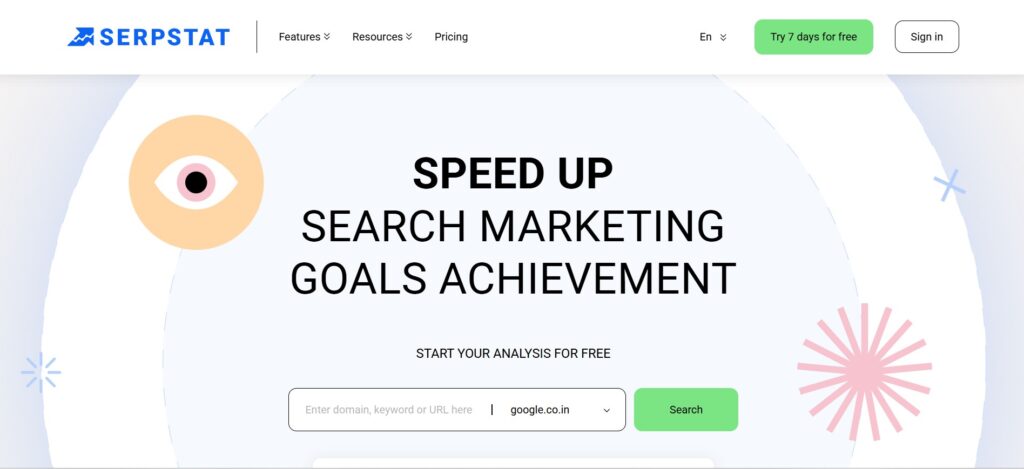
Where it helps: rank tracking, keyword clustering, basic site audits, PPC snapshots.
Where it can feel heavy: interface takes a session to learn.
Serpstat sits in the “does most things pretty well” bucket. The keyword clustering saves manual grouping when planning a section. The backlink module won’t replace Ahrefs, but it’s fine for directional checks. For teams that need an all-in-one without the top-shelf price, this earns a look under the competitor analysis tools umbrella.
8) Majestic: link graphs for people who like link graphs

Where it helps: Trust Flow, Citation Flow, topical breakdowns, historic vs fresh indexes.
Where it can feel heavy: the UI is utilitarian and focused on links only.
When link profiles matter more than anything else, Majestic shines. It shows whether a competitor’s authority comes from a healthy mix of sites or a narrow set that might not last. Use Topical Trust Flow to check if links align with your category. Not a generalist, but among competitor analysis tools, a strong specialist.
9) MozBar: instant SERP and on-page checks in your browser
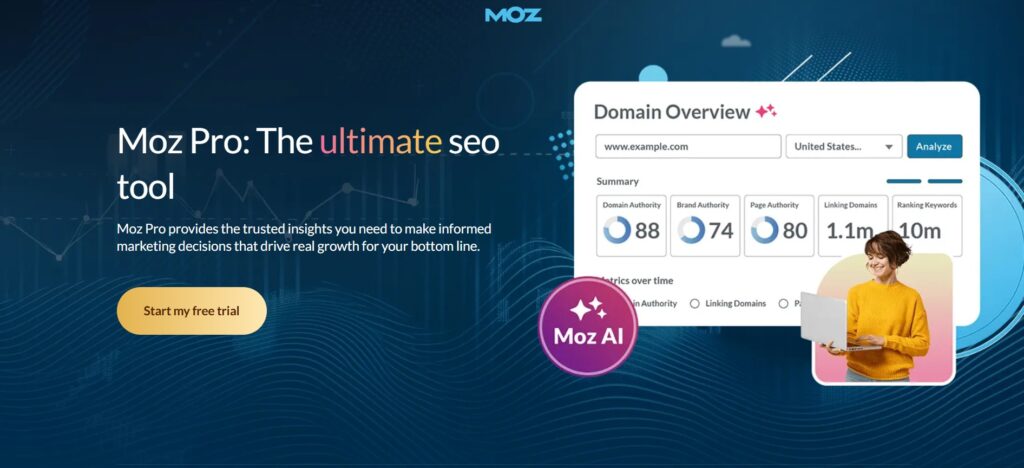
Where it helps: quick checks while browsing search results or reviewing a page.
Where it can feel heavy: it’s a companion, not a primary platform.
If time is spent in the SERP, MozBar gives instant context: page authority, domain authority, link counts, and on-page basics. It’s a free way to sharpen intuition about what wins. Useful for spot checks while planning outlines. For teams that need free or simple competitor analysis tools, this is an easy yes.
10) Owletter: see rivals’ email playbook

Where it helps: tracking send frequency, subject patterns, and timing.
Where it can feel heavy: relies on inbox capture; some lists block automated signups.
Owletter collects competitors’ newsletters into one place and charts the basics: how often they send, when they send, and which subjects they lean on. It gives a feel for cadence without subscribing with a work address. Use it to plan your own calendar and to spot openings. Among competitor analysis tools for lifecycle marketing, it’s the easiest way to keep an eye on email without guesswork.
A short, real-world workflow to copy
Here’s a 90-minute sprint to run for new markets:
- Pick 3 competitors that matter.
- Use Semrush or Ahrefs to pull keyword gaps. Save the list of terms with search intent that matches pages you can build fast.
- Open Majestic or Ahrefs to find five realistic link targets that have linked to similar content. Add them to your outreach sheet.
- Use SpyFu or iSpionage to grab ad copy and landing page patterns. Note the promise, proof, and CTA structure.
- Optional for email: set up Owletter to watch competitor cadence so sends don’t collide with crowded inbox hours.
Output: one doc with target keywords, one outline, one link list, one ad test, one social test. That’s enough to start. The strength of competitor analysis tools isn’t the dashboard; it’s the speed from data to action.
One note for popup-focused teams
If onsite popups are part of the plan, use insights from these tools to match intent. Hello Bar offers the best popups and precise insights. Example: if a top rival’s traffic spikes on comparison keywords, trigger a simple, fast popup only on those pages with a “get the side-by-side checklist” lead magnet. Keep this to one targeted use case, not a site-wide habit. The rest of the plan should come from data pulled with competitor analysis tools.
Also read our blog on Lead Capture Popups: How to Create?
What to buy first (by budget)
$0–$50/month
- MozBar for everyday checks.
- Social Blade for public social stats.
- LowFruits credits for winnable keyword ideas.
- A simple rank tracker, even if it’s just a weekly export.
That mix lets small teams ship content and spot trends without a subscription stack. It’s the entry point into competitor analysis tools that still move the needle.
$50–$200/month
- SpyFu or Serpstat for SEO and PPC overlap.
- Owletter if email is a core part of the flywheel.
This covers most channels with a few focused competitor analysis tools while keeping costs tight.
$200–$600/month
- Semrush or Ahrefs as the anchor.
- Majestic if link quality matters in your niche.
A common landing spot for growing teams. Expect depth without overspending, and add Talkwalker alerts during busy seasons. It’s a balanced stack of best competitor analysis tools.
$600+ per month
- Keep the anchor (Semrush or Ahrefs), then add Similarweb for board-level views and Talkwalker or Brandwatch for listening and research.
- Heavy paid programs benefit from iSpionage for a clean view of rivals’ ads.
At this level the purchase is time saved across a team, not just features. The result is a mature bench of best competitor analysis tools for planning, execution, and monitoring.
Common traps to avoid
- Buying overlapping suites because each has one chart you like. Pick one anchor and learn it well.
- Tracking everything and acting on nothing. For each saved report, write the action next to it.
- Ignoring export and API options. If stakeholders need briefs, clean exports save hours.
- Chasing tiny ranking swings. Focus on terms with business intent and pages that can win.
- Forgetting to revisit. Set a monthly calendar slot for a one-hour review of competitor analysis tools outputs.
Final thought
Pick one anchor, add one specialist, and run the same play every week. The right competitor analysis tools are the ones the team actually opens and uses.
FAQs
Do multiple tools help?
Usually yes. A lean stack might be an SEO anchor plus a content scout and a social tracker. That gives three angles on the same market.
What about free tools only?
Free competitor analysis tools can go far if focus stays tight: browser extensions, public social stats, and a simple findings sheet. When a ceiling is hit, buy only what solves the next bottleneck.
How to judge data accuracy?
Look for direction, not perfection. Cross-check a few terms or pages across two competitor analysis tools. If the order ranks the same, it’s good enough to act.
Which should an eCommerce team start with?
Start with Semrush or Ahrefs, then use a social tracker. If email is central, add Owletter. That mix covers the full funnel with competitor analysis tools used weekly.
Can this be done without a dedicated analyst?
Yes. Pick one hour a week, run the same workflow, and build muscle. The right best competitor analysis tools don’t require a PhD—just consistency.

